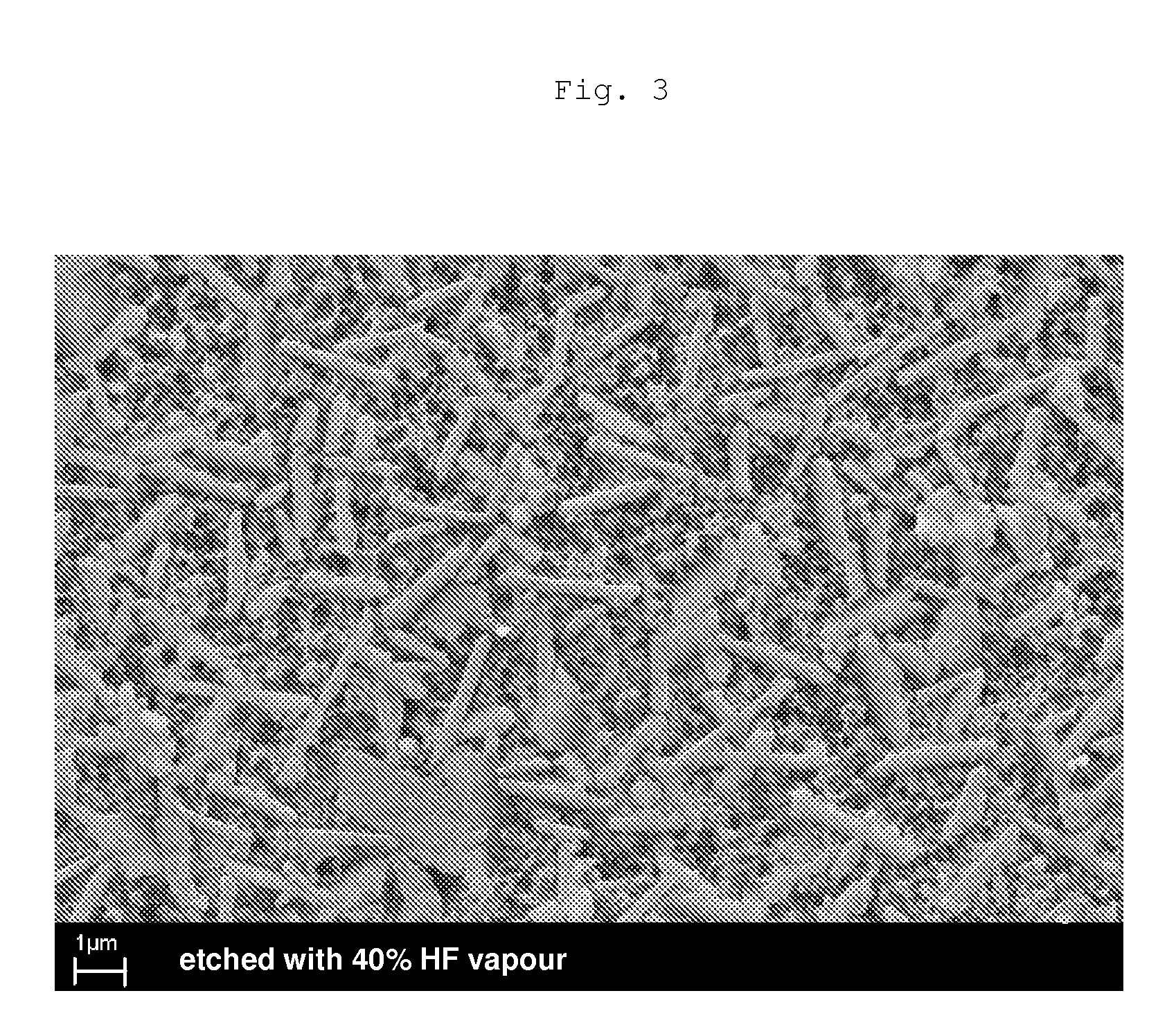Lithium silicate glass ceramic and glass with ZrO2 content
a technology of lithium silicate glass and ceramics, applied in glass shaping apparatuses, medical science, garments, etc., can solve the problems of composites without mechanical properties and inconvenient us
- Summary
- Abstract
- Description
- Claims
- Application Information
AI Technical Summary
Benefits of technology
Problems solved by technology
Method used
Image
Examples
examples 1 to 28
Composition and Crystal Phases
[0063]A total of 28 glasses and glass ceramics according to the invention with the composition given in tables I to IV were prepared by melting corresponding starting glasses followed by heat treatment for controlled nucleation and crystallization.
[0064]For this, the starting glasses were firstly melted in a 100 to 200 g scale from usual raw materials at 1400 to 1500° C. and transformed into glass frits by pouring them into water. These glass frits were then melted a second time at 1450 to 1550° C. for 1 to 3 h for the homogenization. The obtained glass melts were poured into pre-heated moulds to produce glass monoliths. These glass monoliths were transformed into glasses and glass ceramics according to the invention by thermal treatment.
[0065]The applied thermal treatment for the controlled nucleation and controlled crystallization is given in table V for selected examples. The first heat treatment in the range of from 500 to 560° C. usually led to the...
example 29
Glass and Glass Ceramic Blanks
[0069]A glass with the composition according to example 5 was prepared by mixing corresponding raw materials in the form of oxides and carbonates for 30 min in a Turbula mixer and then melting the mixture at 1450° C. for 120 min in a platinum crucible. The melt was poured into water in order to obtain a finely divided glass granulate. This glass granulate material was melted again at 1530° C. for 150 min in order to obtain a glass melt with particularly high homogeneity. The temperature was reduced to 1500° C. for 30 min and cylindrical glass blanks with a diameter of 12.5 mm were then poured into pre-heated, separable steel moulds or graphite moulds. The obtained glass cylinders were then stress-relieved at 550° C. A glass with nuclei for lithium metasilicate or lithium disilicate crystals was obtained.
[0070]FIG. 1 shows the result of the differential thermal analysis (DSC) of a pounded glass cylinder.
[0071]FIG. 2 shows, using high-temperature X-ray di...
example 30
Hot-Pressing onto Zirconium Oxide Ceramic
[0080]The lithium disilicate glass ceramic according to example 5 was pressed by hot-pressing at 920° C. onto zirconium oxide ceramic of the type 3 Y-TZP, obtainable from Tosoh, in a Programat EP 5000 combined press and firing furnace from Ivoclar Vivadent AG, Liechtenstein. After conclusion of the coating process, a defect-free join resulted.
[0081]FIG. 4 shows a scanning electron microscopy (SEM) photograph of this bond after etching with 40% HF vapour.
PUM
| Property | Measurement | Unit |
|---|---|---|
| temperature | aaaaa | aaaaa |
| pressure | aaaaa | aaaaa |
| fracture toughness | aaaaa | aaaaa |
Abstract
Description
Claims
Application Information
 Login to View More
Login to View More - R&D
- Intellectual Property
- Life Sciences
- Materials
- Tech Scout
- Unparalleled Data Quality
- Higher Quality Content
- 60% Fewer Hallucinations
Browse by: Latest US Patents, China's latest patents, Technical Efficacy Thesaurus, Application Domain, Technology Topic, Popular Technical Reports.
© 2025 PatSnap. All rights reserved.Legal|Privacy policy|Modern Slavery Act Transparency Statement|Sitemap|About US| Contact US: help@patsnap.com



